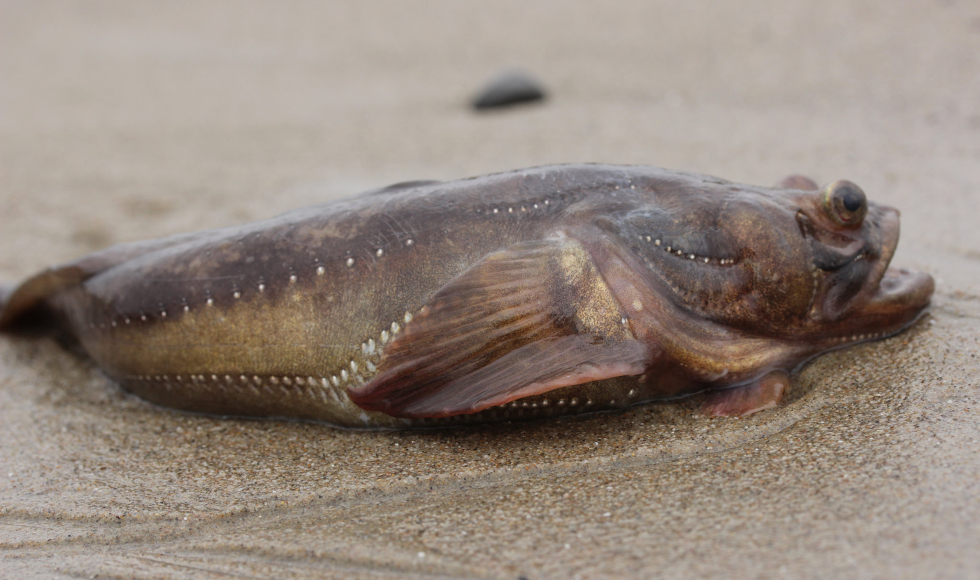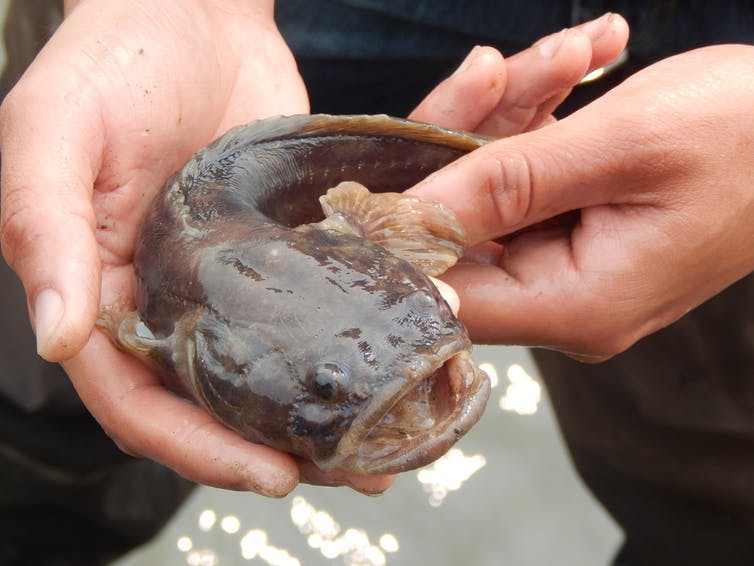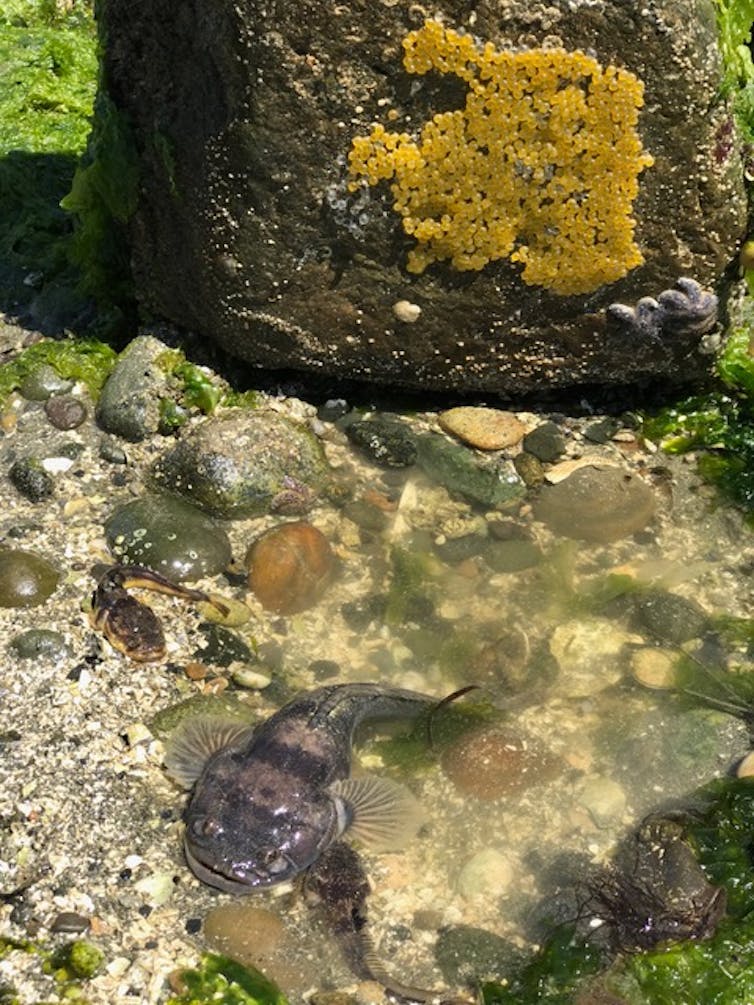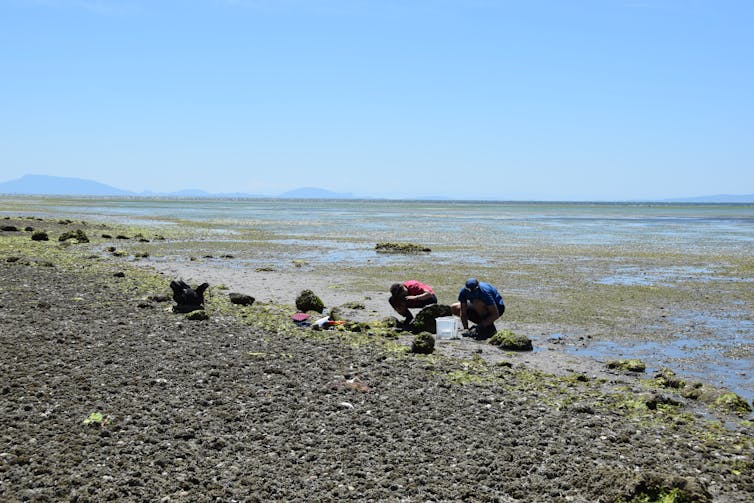Being a dad is hard when you’re a plainfin midshipman fish

Photo by Bjorn S... (Flickr.com)
BY Brittney Borowiec
February 22, 2019
Each spring, male plainfin midshipman fish (Porichthys notatus) — a kind of toadfish — emerge from the depths of the Pacific Ocean to breed on the beach. They overwhelm the beach at low tide, wedge themselves beneath rocks and excavate a nest in the rocks and sand. When their work is completed, the bachelors settle down and hum to attract mates.
If he’s lucky, a midshipman fish will soon have hundreds of eggs deposited on the roof of his nest. He’ll then spend the next three months obsessively protecting, cleaning and caring for them.
The peculiarities of the plainfin midshipman’s mating tactics are an active area of research in the Aquatic Behavioural Ecology Lab at McMaster University, led by Sigal Balshine and her former PhD student, Aneesh Bose. My own research revolves around understanding the physiology of fish coping with low oxygen conditions, especially cycles between low and high levels of oxygen. By combining our expertise in behavioural ecology and physiology, we investigate how breeding in the intertidal zone impacts the reproductive success and physiology of the plainfin midshipman fish.

Parental stressors
The intertidal zone between the ocean and dry land is in constant flux, as the tides move in and out, alternatively submerging and exposing the zone to seawater and air. When the tide recedes, the water and oxygen levels in midshipman fish nests plummet and the temperature soars. Unwilling to leave their charges unprotected, a doting father can literally become a fish out of water, facing hours of air exposure. These conditions can’t be easy on these fathers — but just how difficult is it for these toadfish?
Whether you’re a mammal, bird, fish, or human, being a parent is stressful, hard and costly work. And when you’re a plainfin midshipman, the tricky environment of the extreme intertidal zone makes parenting all the more difficult.
During the breeding season, the beaches are packed with male midshipman fish. Some manage to grab nice, waterfront properties near the ocean. Others end up higher up on the beach, where conditions are more extreme and the periods of air exposure are longer.
Our recent study investigated whether midshipman fish preferred some locations over others. We found that midshipman fish preferred nests closer to the water, where conditions are less extreme. It’s not too surprising that fish preferred to build their nests in locations with comparatively mild environments.
Desirable real estate
Midshipman dads usually set up nests beneath large rocks. We made faux nests out of garden tiles (the kind you can find at your local hardware store) and set them out along the beach. When the tides were high, wild midshipman fish could take up residence under whichever garden tile struck their fancy.

A month later, we visited our artificial nests and found them covered in eggs and being cared for by attentive fathers. Analysis of the number and health of the eggs gave us information about the reproductive success of each midshipman parent. Fish who lived closer to the water had not only more eggs, but eggs that were more likely to survive.
Eggs do better when they brood in the lower intertidal zone. But how did the choice of nest site affect the midshipman dads themselves? Was living higher in the intertidal zone more stressful or difficult? Did this have something to do with the reduced success of clutches laid further from the water?
We sampled the tissues from midshipman fish actively guarding their nests. One group of fish was sampled at high tide, when the nest was submerged in ocean water, and one group was sampled at low tide, when the fish experienced the most extreme changes in oxygen, temperature and other environmental conditions.

Measuring stress levels
Back in the lab at McMaster University, we compared tissues from fish at low and high tide to see how well they coped with the changes in their environment. Midshipman fish at low tide showed key indicators of metabolic disturbance, like reduced levels of glycogen, an energy storage molecule, in their brains and livers. Being a low tide was at least a little stressful, even for fish located close to the ocean.
Fish that nested high in the intertidal zone, and as a result were isolated from the ocean the longest, showed the greatest amount of disturbance. Just like their eggs, midshipman fathers that nested far from the ocean did not do as well as those that nested closer to the water.
Something that struck us about the tissue analysis was how remarkably well the midshipman fish coped with the harsh conditions of the intertidal zone. Even after six hours of exposure, fish suffered only mild levels of metabolic stress. No mammal could survive more than a few minutes, much less hours, without air. These bizarre toadfish are well-adapted to their extreme lifestyle.
Providing parental care is a costly endeavor. For animals that must also cope with extreme environments, climate change further threatens their ability to raise their offspring. Warmer temperatures, higher sea levels and the erosion of the rocky beaches that midshipman rely on may harm the ability for these dads to not only care for their young, but to survive.
This article was written in collaboration with Nicole Yee, an undergraduate student in Life Sciences working with the Aquatic Behavioural Ecology Lab at McMaster University.![]()
Brittney Borowiec, PhD Candidate in Biology, McMaster University
This article is republished from The Conversation under a Creative Commons license. Read the original article.


